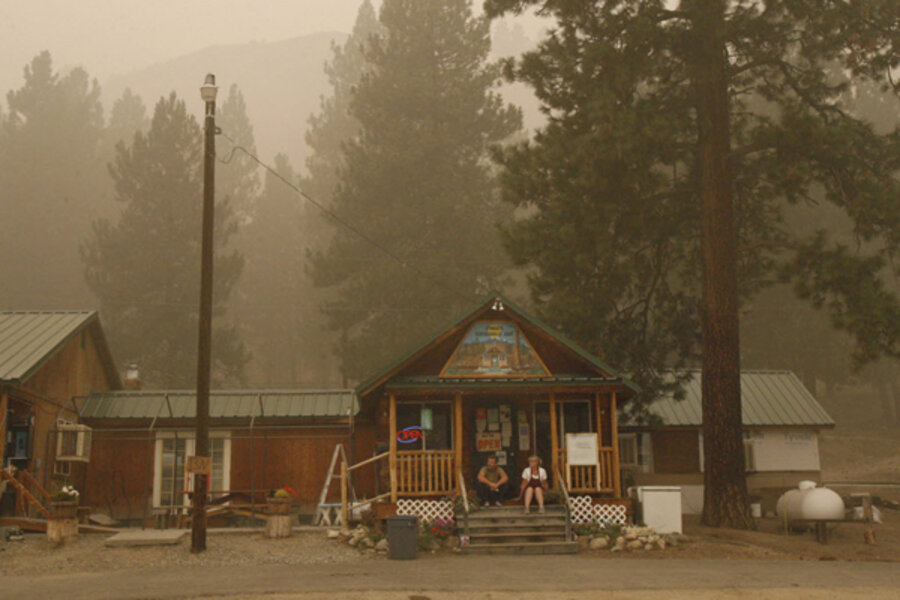Vacationers ordered to evacuate Idaho resort as wildfire presses closer
Loading...
| Salmon, Idaho
Authorities on Saturday ordered the evacuation of a small mountain resort in Idaho as firefighters braced for the possibility that a wildfire that has charred 82,000 acres could reach the town of Featherville in the evening.
Smoke from the Trinity Ridge Fire in the Boise National Forest blanketed roadways leading to Featherville, raising health concerns and reducing visibility, said Gary Walker, spokesman for the Elmore County Sheriff's Office.
Featherville has fewer than 100 full-time residents but vacation homes and rental cabins swell the summertime population to as many as 1,000. It was unclear how many people had remained in Featherville in recent days after warnings of a possible evacuation were issued.
The fire is one of dozens burning out of control across 10 drought-parched western states, including a blaze that destroyed dozens of homes this week in Washington state and another that threatened a town in Southern California.
The order to exit Featherville came as the fire, driven by wind gusts and low humidity, gained an additional 10,000 acres overnight, blazing just three miles west of the town.
On Saturday, crews stood guard to protect buildings in the town as firefighters on its outskirts prepared to torch the swath of land separating the community from the fire marching down the mountainside.
The burn-out operation is designed to destroy the brush, trees and other fuels that would otherwise feed the flames, fire information officer Steve Till said.
"We are ready to engage the fire when it comes off the mountain but we will engage it on our terms rather than its terms," said Till.
In Washington state, soaring temperatures and high winds along with the threat of lightning on Saturday complicated efforts to hold the line against the Taylor Bridge Fire in the northwest part of the state near the town of Cle Elum.
The blaze has destroyed at least 48 homes and 15 other buildings since it broke out on Monday and is threatening 130 more, said Mick Mueller, a spokesman for the state's emergency response team. Authorities had earlier estimated the fire, which has burned over 23,000 acres, had destroyed some 70 homes.
The blaze at the eastern edge of the Cascade Mountains is 40 percent contained, with authorities hopeful they can get it fully under control by Monday.
But risks remain for residents and the roughly 1,000 firefighters in the area, as evidenced by flaming embers that landed a quarter mile behind fire crews along the northern edge of the fire on Friday, forcing them to squelch a new, fast-spreading blaze.
"We had to divert resources toward that," Mueller said. "We had to push back the containment line by 100 acres."
In southern California on Saturday, hundreds of residents of the town of Ranchita, about 50 miles from San Diego, returned to their homes as fire crews gained control over wildfires in the area.
(Additional reporting by Jonathan Kaminsk; Writing by Alex Dobuzinskis; Editing by Mary Wisniewski and Jackie Frank)





